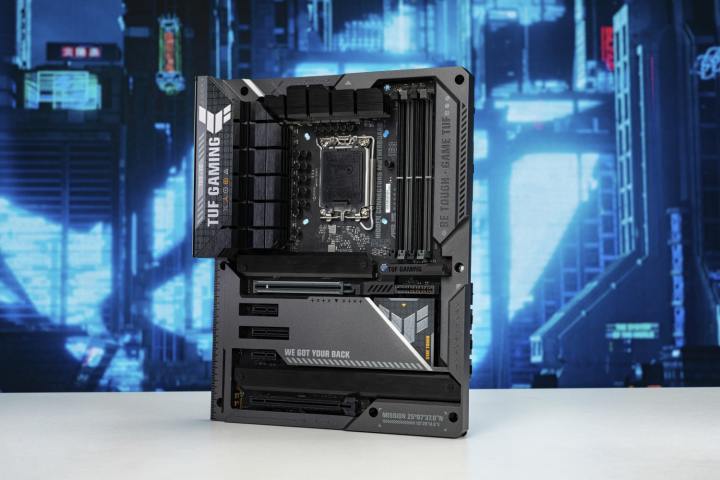
If the CPU is the brain of your computer, the motherboard is the spine that puts everything together and makes it work as a cohesive whole. Without it, the individual components of your PC can’t communicate with each other.
The key role that the motherboard plays in the health and performance of your computer can’t be overstated, but shopping for a motherboard can definitely be confusing. In this guide, we’ll demystify the whole process and tell you what you need to know in order to pick the best motherboard for your needs.
Main things to consider
Shopping for a great CPU or a graphics card often get the bulk of our attention, but the motherboard also comes with its own list of interesting features. The problem is that those features tend to be confusing to non-enthusiasts.
However, the good news is that most buyers don’t need to become well-read experts on all things motherboard. Instead, shopping for your “mobo” comes down to choosing a few things that are important to you. We’ll go over them below.
Chipset

It all comes down to one of the most important parts of a motherboard: the CPU socket. Chip makers (AMD and Intel) change sockets every generation or two. This translates to a few years, but it also forces upgrades eventually, because an older motherboard is forever limited to only running an older CPU.
For instance, the newest sockets are currently AM5 (AMD) and LGA1700 (Intel). They support the Zen 4 (AMD) and the Alder Lake and Raptor Lake (Intel) generations of processors. An older CPU, say an Intel Coffee Lake, will not run on them; similarly, a newer chip — whenever those come around — will not fit and will require a new motherboard.
That’s why most people start by choosing the processor and the chipset. While the PC can’t run without the motherboard, it’s the CPU that dictates what kind of performance you’re going to get — among other things. However, you can’t match up every CPU with every motherboard, which is why it’s usually easier to pick your CPU of choice and then go from there.
If you’re asking yourself which CPU to choose, we have a handy guide for that. Make sure to read carefully about the kind of socket your new CPU requires.
What to do if you’ve got an older motherboard and you desperately want to upgrade your system? Well, that’s the problem — not much. Swapping the motherboard to a newer one is your only option, and at that point, you might also need to change out other components depending on compatibility.
Form factor
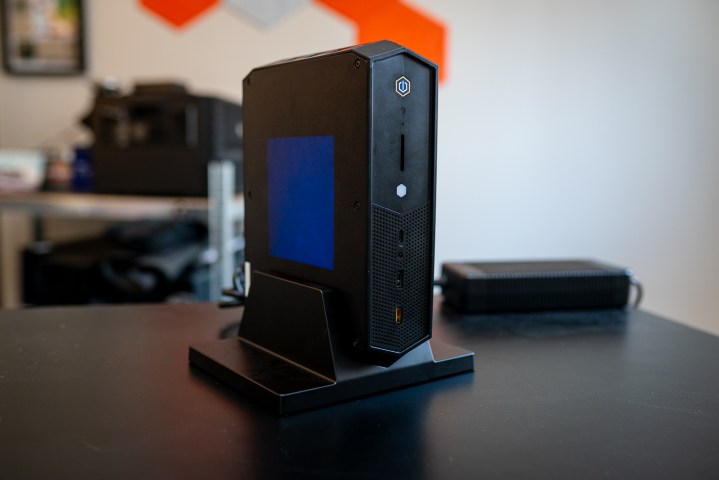
How big is your case? That’s the next question to ask yourself when you buy a motherboard, and it’s probably best to choose this based on how big a PC you want to build. The largest form factor is E-ATX, followed by ATX. Then there’s Micro-ATX, which cuts off a few inches and removes a few slots. It might also have fewer features.
E-ATX is used for high-end motherboards and is usually useful only for enthusiasts in the absolute biggest PCs. You’ll need a big case to fit it in, but in turn, you’re getting more ports and expansion slots. ATX is the standard form factor, although Micro-ATX is fairly popular too.
Mini-ITX is used for small form factor PCs. These computers take up less space while still being able to house traditional-sized components. However, the more powerful you make them, the more they might suffer from thermal constraints due to the limited space.
When settling on a form factor, think about the size of your case and the kinds of components you want to put into your PC. If you’re going for a high-end PC build packed full of the latest hardware, you’re probably better off going with ATX. This also gives you more expansion slots, but most of all, it fits neatly inside a roomy PC case. That, in turn, means your components will have more space to breathe — and that’s important as thermals can become a serious issue when you’ve got one of the best graphics cards.
Speaking of graphics cards, there’s one more consideration to keep in mind when choosing the form factor — how many slots your dream GPU will take up. Massive GPUs like the RTX 4090 can take up four slots or even 4.5, but less extreme options like the RX 7600 are dual-slot and don’t require nearly as much space. While an RTX 4090 can fit inside a Mini-ITX build, it not only looks comical, but also might have a hard time where cooling is concerned. In general, powerful GPUs feel best in an E-ATX, ATX, or Micro-ATX.
Slots

Motherboards come with a bunch of slots that are useful for your PC. First of all, the motherboard dictates how many sticks of RAM you can use, for example, and much like the processor, it also locks you into a choice between DDR4 and DDR5 memory. While DDR5 RAM is still pricier, things will slowly shift and become the norm over time, so if you’re buying a board now, you have to keep in mind that buying a DDR4 variant means you won’t be able to upgrade without swapping it out in the future.
You’ll also find PCI Express slots on your motherboard. There’s typically one x16 slot these days, and that’s for the GPU — the days of running dual graphics cards seem to be behind us in consumer PCs. However, if you’re building a workstation for machine learning or other purposes, high-end boards do sometimes feature more than one PCIe x16 lane.
There are also x1 slots for things like sound cards, Wi-Fi, Bluetooth, USB expansion cards, and network cards (Ethernet), as well as SATA expansion cards for things like extra drives. Modern motherboards also come with M.2 slots that can be used for an SSD, although some SSDs can also go in the SATA slot.
When it comes to PCIe slots, another thing to keep in mind is what generation of PCIe your motherboard supports. Although PCIe 5.0 is out already, SSDs and other components that support it are few and far apart, so the main thing to aim for is PCIe 4.0. PCIe 3.0 is slowly becoming dated tech, although you will still find it as the main option in older, budget-friendly components.
How to make sense of all of this? Most people only really need two to four RAM slots, as it’s better to not use a single RAM module for all of your memory and try dual-channel RAM instead. Storage-wise, an M.2 SSD is a wonderful addition to any PC, and you might want to use an SSD for your storage needs too, seeing as SSDs and HDDs cost pretty much the same these days.
Things like Wi-Fi and Bluetooth are optional additions that will increase the price of your motherboard. They’re nice to have, but can also be added later. It’s worth noting that your motherboard will most likely come with a built-in sound card, and that audio will be sufficient for nearly everyone except audiophiles.
Ports
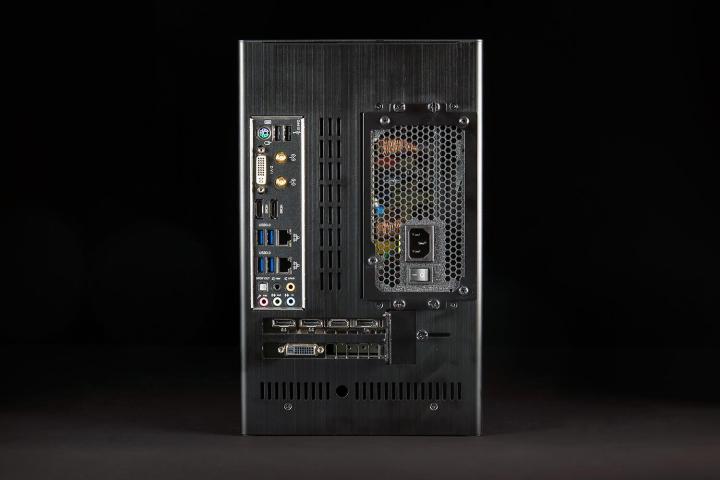
Another thing to consider are ports. Don’t let them be an afterthought, because you might miss them if you have too few. Let’s go over some of the most common ports you’ll find in a consumer motherboard.
- USB 2.0/3.0/3.1/3.2: You need these for pretty much everything, from your speakers to your mouse. Speaking from experience, having too few of these is really annoying. There are several generations of USB ports, and as the number goes up, so does the bandwidth — it’s better to stick to USB 3.0 these days where possible.
- USB Type-C: You’re probably familiar with these from things like phone chargers. These ports are smaller, but they have their uses, although peripherals still use the standard form factor.
- Audio ports: Many headsets and speakers these days rely on USB, but you still want a couple of 3.5mm input/output audio ports.
- Thunderbolt: Thunderbolt ports are pretty rare in motherboards, but you’ll find them in high-end models. These are high-speed input/output ports that can be used to connect peripherals, monitors, external graphics, or portable drives.
- HDMI/DVI/VGA/DisplayPort: DVI and VGA are pretty much obsolete by now, but you will find them on older motherboards. HDMI and DP are more common to find, but you will only use them for integrated graphics, as discrete GPUs come with their own ports (which you should take care to connect to instead of the motherboard).
- Ethernet: The Ethernet port is used for connecting to the internet, so it’s crucial unless you’re choosing Wi-Fi. Newer motherboards support faster bandwidth, such as 10Gb.
Aside from the rear panel, your motherboard will also have front panel headers that connect to your case to deliver some extra ports at the front of the case. This is another reason why your motherboard and your case need to closely match, not just in size, but in features too.
Extra features

There’s a buffet of extra features like expanded overclocking support, improved temperature monitoring, ultra-durable construction, and so on. Most of these aren’t worth the money. One feature we recommend enthusiasts consider, though, is active fan management. A motherboard that provides UEFI or software control of fan speed can make your system quieter by reducing fan speed when your system is idle.
Realistically, most people won’t play with the BIOS and adjust power phases too much. However, if you’re really looking to push your PC to its limits and overclock, a high-end motherboard is nearly necessary.
Future-proofing
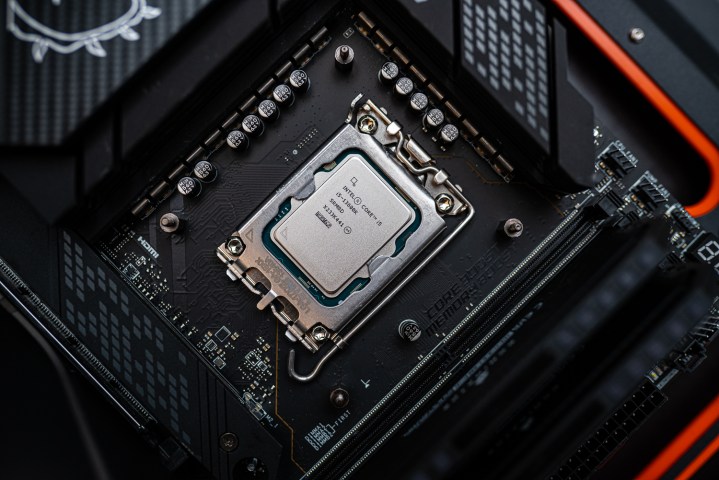
Last but not least, another thing to consider is future-proofing your whole build. As mentioned throughout this article, choosing a motherboard essentially means locking your entire computer to a certain generation of processors and other components.
In the case of AMD, its previous platform, AM4, lasted for over five years. If you bought the first CPU to be released for that chipset, you could have used the same motherboard for multiple upgrades. However, now that AMD has moved on to AM5, people who still have an older board won’t be able to upgrade past a certain point.
Intel typically changes its socket a little more frequently. Although the LGA1700 socket encompasses two generations, they both came in quick succession, in 2021 and in 2022. Rumor has it that Intel’s next-gen CPUs will switch to a new socket, so all those happy Alder Lake and Raptor Lake owners will need to remain satisfied with their CPU choices for years to come.
Swapping out a motherboard is quite disruptive to the rest of the system, as you will need to check whether all the components align once the processor is swapped out. Things like case size, power supply, cooling solution (some CPU fans are bulky beasts), ports, and slots will once again come into play. That’s why if you shop now, we might recommend going for AM5 and LGA1700 instead of older options just because of possible upgrades further down the line. Of course, this depends entirely on your budget and use case, which brings us to the next section.
Choosing the right motherboard for your budget
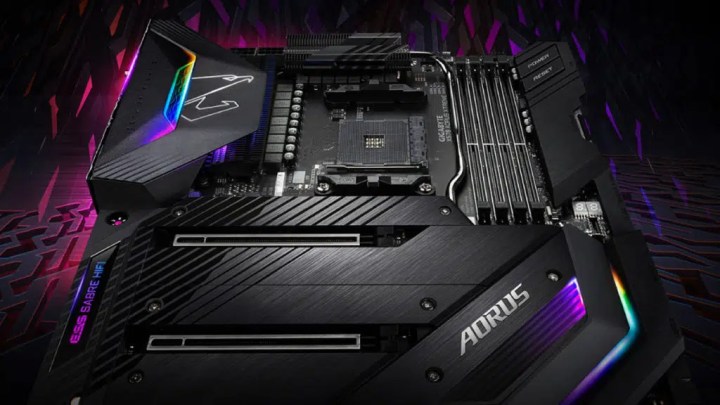
As we’ve now established, motherboards are pretty varied. Some are simple and work as a starting point for the rest of your computer, while others are high-end and deliver a bunch of features all on their own. Only you know what you ultimately need for your PC.
As a general rule of thumb, motherboards are pretty easy to overpay for, so you don’t necessarily need the greatest model just to run a midrange gaming PC. The people who should actually invest in high-end boards are those who have a big budget and need the extra slots, power delivery settings, and overclocking support. This includes content creators, high-end gamers, and people who use their PCs as workstations for AI workflows (or any other resource-heavy task). With that said, nothing stops you from buying an expensive mobo even if you’re more of a casual user — it’s just not really needed.
For the latest generations of processors, motherboards are split into the following chipsets:
Intel
- Z690/Z790: Alder Lake and Raptor Lake; high-end models.
- H660/H770: Alder Lake and Raptor Lake; these are midrange options with fewer slots and less overclocking support.
- B660/B760: Alder Lake and Raptor Lake; budget-friendly options with fewer features and slots.
AMD
- X570/X470: Ryzen 5000 (Zen 3); high-end options.
- X670E/X670: Ryzen 7000 (Zen 4); current-gen high-end models.
- B550/B450: Ryzen 5000 (Zen 3); midrange boards for value-oriented builds.
- B650E/B650: Ryzen 7000 (Zen 4); midrange boards for current-gen AM5 CPUs.
It’s worth noting that AMD’s AM5 platform only supports DDR5 memory, while Intel’s LGA1700 can support either DDR4 or DDR5, but you will need to choose one upon purchase and won’t be able to change that unless you buy a new motherboard down the line.
Do you need an expensive motherboard?
Modern-day motherboards can range from cheap to affordable to outrageously expensive. However, unlike many other components, buying a motherboard usually revolves more around the features, slots, and compatibility rather than budget.
When you’re shopping for a motherboard, start from the top of this guide and make notes on what you need. For instance, if you want a high-end motherboard with access to Wi-Fi and overclocking that supports Intel’s Core i9-13900K, you’ll need an expensive model along the lines of the If you don’t need anything fancy, however, you can save a lot of money by buying a B660 motherboard like this .
Look for a motherboard that ticks all the boxes you need and then consider the pricing. Keep in mind that unless you’re really looking to push your PC, you don’t need an expensive motherboard — but you also don’t want it to be the weakest component in your PC. Seeing as motherboards range from $70 to $500, you don’t need to buy the $500 model, but you’re probably better off spending an extra $30 to have a few more slots or better support for different power levels.
Editors' Recommendations
- Here’s how to choose the right printer to buy in 2024
- Here’s everything to consider about buying a CPU in 2023
- Overclockers surpassed the elusive 9GHz clock speed. Here’s how they did it
- What is a PC bottleneck, and how do I avoid one?
- Best Buy to restock Nvidia RTX 30-series GPUs again — here’s how to score one





